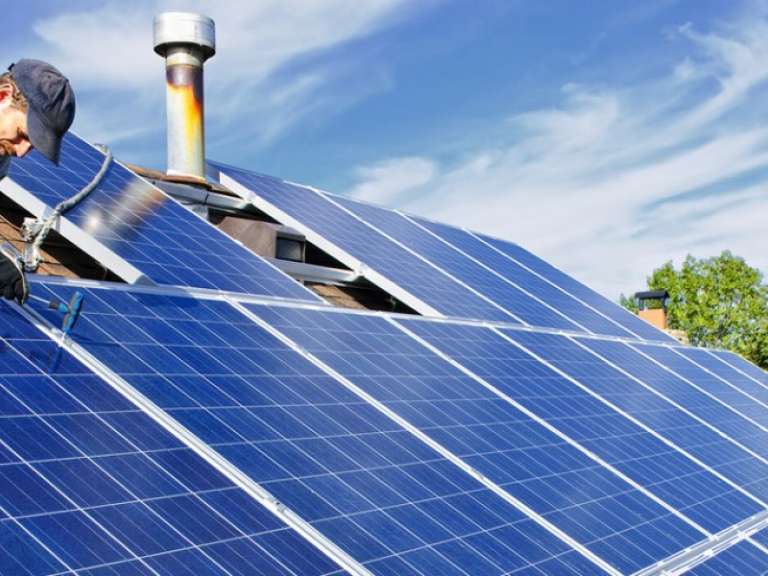New Sources of Revenue: What Will Generate Growth for Utilities?
Robert RapierRetail electricity sales have flattened as distributed generation has gained in popularity. Utilities are searching for new sources of revenue in response.

According to the Energy Information Administration (EIA), retail sales of electricity have been relatively stagnant for more than a decade. There are multiple reasons for this, but this stagnation has utilities seeking new sources of revenue. Let's explore the factors behind this lack of growth and the innovative ways utilities are nevertheless attempting to grow revenues.
EIA data show that since 2001, overall retail sales of electricity have risen by less than 11 percent. However, between 2007 and 2015, there was no growth in overall retail electricity sales. Slight growth among retail and commercial users was offset by a decline in sales to industrial users.
This flattening of growth since 2007 is rooted in the recession of 2007–2009, and in the rise in energy prices since 2007. These factors prompted many customers to conserve, become more energy efficient, purchase power directly from a third-party supplier, or produce their own power. As utilities are becoming less centralized, these factors will have a continuing and long-term impact on demand growth, which has led utilities to search for new sources of revenue to grow their business.
Utilities that are looking to grow will likely need to seek opportunities that do not rely on load growth. Many customers are using less energy than in the past, and a growing number are producing more of their own power. Because virtually all customers still rely on the grid to some degree, some utilities are moving to demand charges based on peak usage for the year to cover the fixed costs of operating and maintaining the electric grid.
One future model for utilities is being developed in New York. In 2014 the New York Public Service Commission (PSC) launched Reforming the Energy Vision (REV), with the goal of reforming regulated utilities into distribution system platform providers. The 2030 goals are to reduce energy consumption in buildings by 23 percent, increase renewables to 50 percent of electricity generation, and reduce greenhouse gas emissions by 40 percent (from 1990 levels). Because each of these objectives has the potential to reduce income for the utilities, REV attempts to align these objectives with utility profits. In addition to the traditional cost-of-service model for revenue generation, utilities can now earn money by achieving metrics related to these goals.
Aside from changes in rate design, many utilities are reacting to reduced energy consumption by moving into new businesses. After the experiences of the 1990–2000s, some may be reluctant to venture into new areas as past utility forays into non-traditional services often performed poorly. There are many reasons for the poor performance, but a common theme was a lack of experience in some areas, which led to unrealistic financial projections and unappreciated risks.
Despite previous failures, the shifting landscape in the utility sector creates incentives to pursue new business opportunities. This requires thinking creatively, understanding the reasons previous ventures failed, and either sticking to businesses close to the organization's core competency or hiring teams with the appropriate expertise.
Utilities have some core strengths that can be leveraged into new business opportunities. A key strength is the physical assets and infrastructure a utility owns. Some utilities have begun to deploy their existing truck fleets for landscaping and tree-trimming, or heating, ventilation, and air conditioning (HVAC) services. Pacific Gas & Electric has announced that it is shopping more than 70,000 transmission towers, 200,000 transmission wood poles, hundreds of buildings and 4,500 properties as potential candidates for wireless connections. This is a unique business opportunity in a fast-growing sector that wasn't available 20 years ago and is the kind of niche opportunity utilities need to seize in today's climate.
Other resources that can be leveraged by utilities include existing customer databases and relationships. These can provide the basis of a platform that the utility can use to offer services like mobile apps that allow customers to track and manage their energy usage.
Recognizing customers' interest in energy-efficient technologies, some utilities have teamed up with third-party vendors to offer solutions like smart thermostats. With a growing base of installed home solar power, there is also a potential market for utilities to provide energy storage solutions for customers.
Utilities are being forced to adapt their business models to a world in which retail electricity demand has been stagnant, and may continue to be stagnant for a number of years. The particular pathway a utility takes will be driven in part by regulations but should leverage existing expertise and resources. It's too early to tell whether the shifting demand patterns are permanent, but for the foreseeable future, utilities are going to need to come up with creative new ways to grow their businesses.
From Uber to AirBNB, the sharing economy has changed a range of industries and sparked collaborative consumption in the power industry.
Improving grid resilience in the US may involve input from ISOs, RTOs, and even lessons from abroad.
A dramatic increase in distributed power generation in recent years has utilities shifting the way they do business.